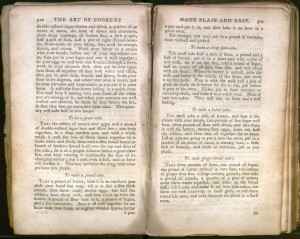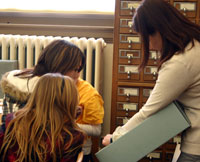 Lena Sheets has a master's degree in education and teaches world cultures at Smithton Middle School in Columbia. In December 2011, she brought 150 sixth-grade students to tour various collections on the MU campus, including Special Collections and Rare Books. This month, we'll hear from her and her students about their experiences with rare books and artifacts.
Lena Sheets has a master's degree in education and teaches world cultures at Smithton Middle School in Columbia. In December 2011, she brought 150 sixth-grade students to tour various collections on the MU campus, including Special Collections and Rare Books. This month, we'll hear from her and her students about their experiences with rare books and artifacts.
SC: How did you incorporate Special Collections into your teaching this semester?
Prior to going to special collections, students had been learning about the Early River Civilizations, such as Mesopotamia, and Egypt. Students then went to Special Collections and learned various ways that early civilizations communicated. Students wrote observations about the items they saw such as scrolls, papyrus, parchment and seals. Students then came back to school and wrote a brief story that incorporated the information they had learned about a particular piece.
What outcomes resulted from your class visits? What were the effects on your students?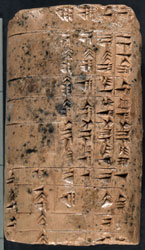
Students could make the connection between history and real people and objects that they have studied.Students are much more engaged in what they are learning and are more inquisitive. They would like to return again next year.
What advice would you give to faculty or instructors interested in using Special Collections in their courses?
If you are working with middle school students, it is important for them to have an activity to do while they visit. The presenters were very engaging and answered a ton of questions, but it just middle school nature for students minds to wander. With the outstanding presentation and a place to write down what they were learning, students were engaged the entire time and had great discussions when they returned.
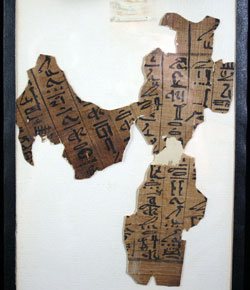 Any additional comments or suggestions?
Any additional comments or suggestions?
I think a visit to Special Collections is a great authentic experience that could fit any place in a unit, at the beginning to generate excitement or at the end to help students make real world connections outside the classroom, or even in the middle to do a little of both.
The staff at Special Collections were so patient and accommodating. In addition, they were full of knowledge about each artifact and kept the students thinking. I also appreciated that they took the time to let me preview the items my students would see. I couldn't contain my enthusiasm for the trip and I only hope, I can get funding to return again next year.
Browse stories by young writers from Lena Sheets' class below.
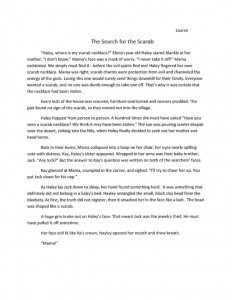
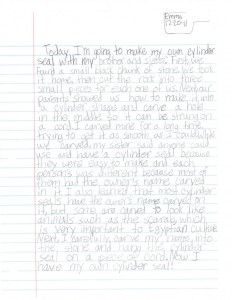
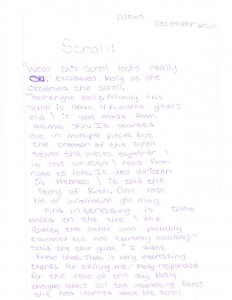

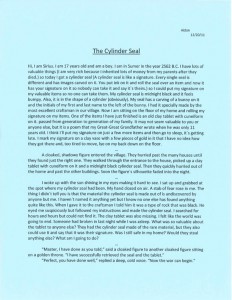
Know an inspiring educator or outstanding student you'd like to nominate for the Spotlight? Email us at SpecialCollections@missouri.edu.


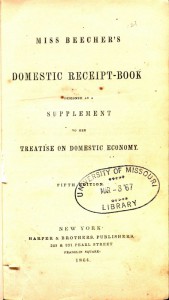 Catharine Beecher (1800-1878), the sister of the abolitionist Harriet Beecher Stowe, was an early feminist and advocate of women’s education. Beecher was at the forefront of the home economics movement in the nineteenth century. She sought to increase the status of traditional women’s work such as cooking and childcare, arguing for its value to society and the need for female education to inform this work.
Catharine Beecher (1800-1878), the sister of the abolitionist Harriet Beecher Stowe, was an early feminist and advocate of women’s education. Beecher was at the forefront of the home economics movement in the nineteenth century. She sought to increase the status of traditional women’s work such as cooking and childcare, arguing for its value to society and the need for female education to inform this work.
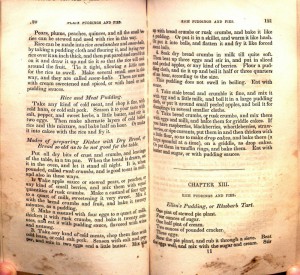
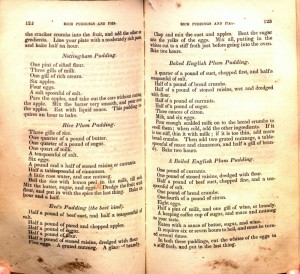
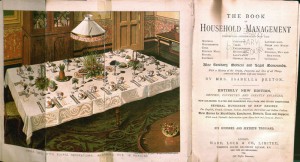 As the oldest girl in a family of twenty-one children, Isabella Mayson (1836–1865) had ample practice in the domestic arts by the time she married Samuel Beeton at the age of 20. Samuel was an innovative editor and publisher, and Isabella participated fully in his publishing business, putting her domestic skills to work as editor of the English Woman's Domestic Magazine. The year after her marriage, Isabella also began work on the monumental compendium of domestic science that is The Book of Household Management. The book was first published it in 1861, when Isabella was only 25, and it was an immediate success due to her attention to accuracy, economy, and taste.
As the oldest girl in a family of twenty-one children, Isabella Mayson (1836–1865) had ample practice in the domestic arts by the time she married Samuel Beeton at the age of 20. Samuel was an innovative editor and publisher, and Isabella participated fully in his publishing business, putting her domestic skills to work as editor of the English Woman's Domestic Magazine. The year after her marriage, Isabella also began work on the monumental compendium of domestic science that is The Book of Household Management. The book was first published it in 1861, when Isabella was only 25, and it was an immediate success due to her attention to accuracy, economy, and taste.

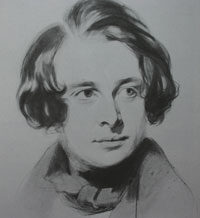 Charles John Huffam Dickens was born on this date in 1812. Dickens, one of the most famous and most belov
Charles John Huffam Dickens was born on this date in 1812. Dickens, one of the most famous and most belov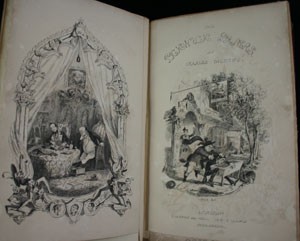 ed of all English novelists, created some of the most powerful characters in fiction. He is known all over the world, and, unlike most great authors, he was rock-star famous in his own time. He moved around a lot as a child and was forced to quit school at twelve years old to work in a factory. Those early memories, however, would later inspire settings both fantastic and real; characters both legendary and sympathetic.
ed of all English novelists, created some of the most powerful characters in fiction. He is known all over the world, and, unlike most great authors, he was rock-star famous in his own time. He moved around a lot as a child and was forced to quit school at twelve years old to work in a factory. Those early memories, however, would later inspire settings both fantastic and real; characters both legendary and sympathetic.
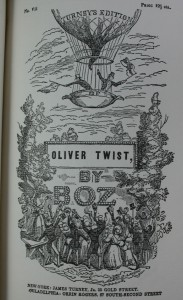 Sketches by Boz, The Pickwick Papers, Oliver Twist, Nicholas Nickleby, The Old Curiosity Shop, Barnaby Rudge, and American Notes.
Sketches by Boz, The Pickwick Papers, Oliver Twist, Nicholas Nickleby, The Old Curiosity Shop, Barnaby Rudge, and American Notes.
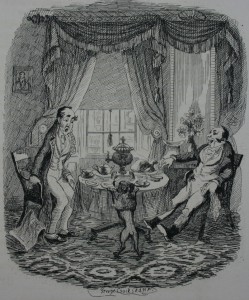 The first of these pairings was with George Cruikshank, a popular cartoonist at the time. The author and illustrator became great friends, though their relationship soured due to many factors including Cruikshank’s growing obsession with the Temperance movement.
The first of these pairings was with George Cruikshank, a popular cartoonist at the time. The author and illustrator became great friends, though their relationship soured due to many factors including Cruikshank’s growing obsession with the Temperance movement.
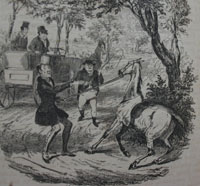
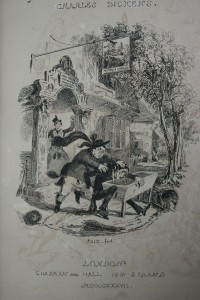 Knight Browne worked with Dickens for over 23 years. He adopted the nickname Phiz to complement Dickens’ Boz.
Knight Browne worked with Dickens for over 23 years. He adopted the nickname Phiz to complement Dickens’ Boz.
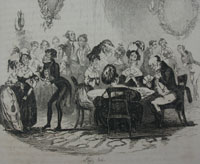 “No other illustrator ever created the true Dickens characters with the precise and correct quantum of exaggeration.”
“No other illustrator ever created the true Dickens characters with the precise and correct quantum of exaggeration.”
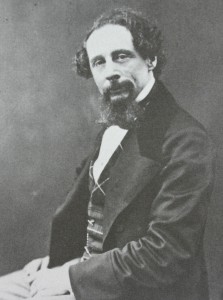 Celebrate his 200th birthday by dropping by Special Collections in Ellis Library to read the stories as Dickens so meticulously intended. We have many of his greatest works, some beautifully bound, dating from the beginning of the author’s literary career. Experience what created this pop sensation first-hand!
Celebrate his 200th birthday by dropping by Special Collections in Ellis Library to read the stories as Dickens so meticulously intended. We have many of his greatest works, some beautifully bound, dating from the beginning of the author’s literary career. Experience what created this pop sensation first-hand!
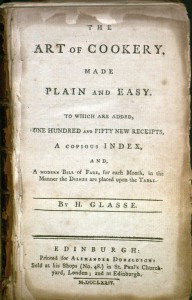 In March,Special Collections, Archives and Rare Books will be participating in
In March,Special Collections, Archives and Rare Books will be participating in 